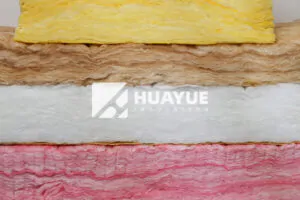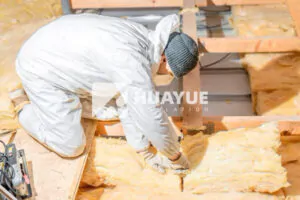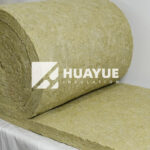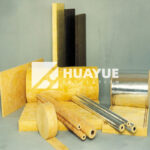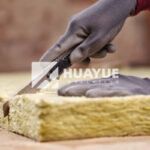What Is the Best Fiberglass Insulation for Your Project?
Finding the right fiberglass insulation can feel overwhelming with so many options out there. If you choose poorly, you could face higher bills or even safety risks.
The best fiberglass insulation combines high R-value, Class A1 fire safety, low formaldehyde, custom sizing, and reliable long-term performance. Choose a reputable manufacturer who offers product flexibility and meets strict global quality standards.
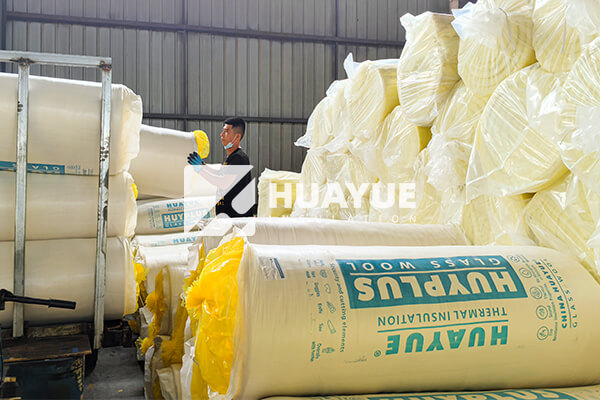
Sometimes it seems like all fiberglass insulation is the same, but my long years working with global industrial clients have shown what really matters. Let’s dig into the specifics so you can easily determine which fiberglass insulation suits your needs best.
Which Fiberglass Insulation Is Best?
Many people are unsure about the differences between types of fiberglass insulation and worry about choosing the wrong one for their building or tank.
The best fiberglass insulation is one that fits your project’s needs—whether that’s batts, rolls, boards, or pipes—all with excellent fire safety, strong resilience, and proven energy performance. Product flexibility and regular quality testing are essential.
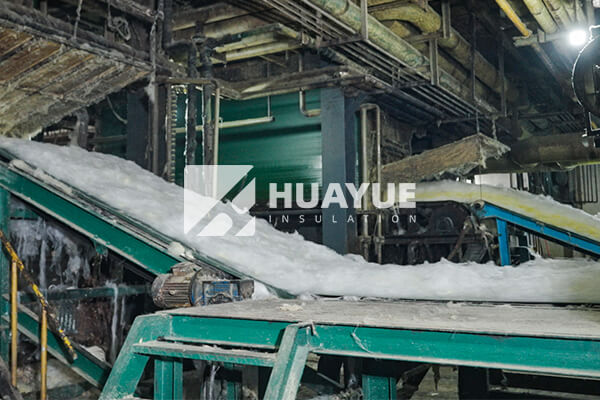
Let me break it down. Batts are cut pieces, rolls are long blankets, boards are rigid panels, and pipes fit around tubing. I find many industrial projects need a mix because each type has its own strength. For example, batts and rolls are soft and fit odd shapes, while boards provide better rigidity for walls and ceilings. Fire safety matters more and more these days. You should always look for Class A1 fire rating (the highest), especially for chemical or high-risk environments.
I have worked on many projects where the key deciding factor was whether the insulation can be cut to size and shaped for non-standard spaces. Many manufacturers claim flexibility but fail to deliver when it comes to custom packaging or specific product sizes. That’s where working with a supplier who offers full customization really pays off, especially on large jobs.
Lastly, look for products that are low in formaldehyde. Some building codes demand it now. This not only improves indoor air quality but also creates a healthier workspace. I always choose partners who meet ASTM and other international standards, because it reduces headaches down the line.
| Fiberglass Insulation Type | Best Use Case | Flexibility | Fire Rating | Custom Options | International Standards |
|---|---|---|---|---|---|
| Glass Wool Batts | Walls, partitions | High | A1 | Yes | ASTM, CE, SGS |
| Glass Wool Rolls | Large open spaces | Very High | A1 | Yes | ASTM, CE, SGS |
| Glass Wool Boards | Ceilings, rigid surfaces | Medium | A1 | Yes | ASTM, CE, SGS |
| Glass Wool Pipes | Pipes, tanks, HVAC | Tailored | A1 | Yes | ASTM, CE, SGS |
What Is the Highest R-Value of Fiberglass Insulation?
Many customers want the best thermal performance, especially in extreme climates or in energy-sensitive facilities.
The highest R-value for fiberglass insulation is usually around R-4.3 per inch, with premium dense products achieving these numbers. Consult the product specs to verify maximum R-value.
Understanding R-value helps everyone make smarter choices. R-value is how we measure how well the insulation stops heat from passing through. The higher the number, the better the insulation. My experience shows that insulation with higher density, such as tightly packed boards or specialized high-performance rolls, allows you to achieve up to R-4.3 per inch of thickness. Most standard fiberglass products range between R-2.9 and R-4.0 per inch. If you need even more, look for products labeled as "high-density" or "premium," but keep in mind that using thicker layers can also increase your total R-value.
When I help engineering teams design insulation for tanks, warehouses, or cold storage, I always suggest looking at both the R-value per inch and the maximum total R-value for the installed thickness. Also, check for any certifications like ASTM, CE, or SGS, as these guarantee that the insulation’s performance claims are tested and verified. Sometimes a slightly higher upfront investment can save you much more in energy costs every year.
| Product Type | Standard R-Value per Inch | High-Performance R-Value per Inch |
|---|---|---|
| Glass Wool Batts/Rolls | R-2.9–R-3.5 | R-4.0–R-4.3 |
| Glass Wool Boards | R-3.2–R-3.7 | R-4.1–R-4.3 |
| Special Dense Products | N/A | R-4.3 (maximum) |
How Thick Should Fiberglass Insulation Be?
People often wonder if more thickness is always better for insulation or if there’s a recommended minimum.
The right thickness depends on your climate, use case, and energy goals, but most walls need 3.5–6 inches, while commercial projects may require up to 12 inches for best results.
I find thickness matters for both compliance and cost-effectiveness. For standard walls, 3.5 inches of fiberglass batts (about R-13) is common, but in colder places or high-performance buildings, people often install 6 to 12 inches (R-19 to R-38). For tanks and cold storage, the thickness might even exceed this, depending on the thermal barrier you need. It is always a balance: more thickness is better for retention, but space constraints and installation cost play a role.
With custom-cut products, you can order exactly the thickness and density to suit any specific need. I have seen some projects save on cost by choosing slightly less thickness in mild climates, while others invest in maximum thickness for energy demands. Always consult your energy codes and work with your insulation partner to fine-tune these numbers for your situation.
| Use Case | Common Thickness | Typical R-Value | Note |
|---|---|---|---|
| Residential Wall | 3.5"–6" | R-13 to R-21 | Check local codes |
| Commercial Roof | 6"–12" | R-19 to R-38 | More for extreme weather |
| Tank Insulation | 4"–12"+ | R-15 to R-38+ | Often customized |
| HVAC, Pipe Insulation | Custom (varies) | R-4 to R-20 | Tailor to diameter and requirement |
Who Are the Best Manufacturers of Fiberglass Insulation?
Choosing the right manufacturer can impact your whole project’s success.
The best fiberglass insulation makers offer full product lines, custom service, Class A1 fire rating, global quality certifications, and a track record of supplying large international projects.
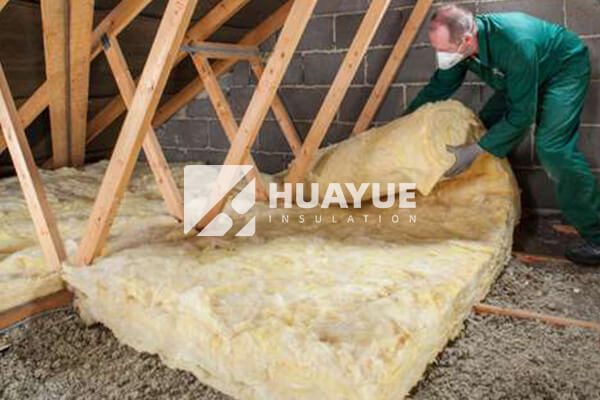
I work with many clients who ask for suppliers who can guarantee both performance and reliability. HUAYUE, for example, has over 30 years in the business and offers glass wool in every format: batts, rolls, boards, pipes, and full customization for packaging, sizing, and density. Their products meet global standards (ASTM, CE, SGS) and deliver Class A1 fire safety—something more engineers are requiring for insurance and compliance.
When I look for suppliers, I always check their history, manufacturing capacity, and global reach. HUAYUE stands out for its full control over the supply chain and its fast shipping from China to over 100 countries. With 15 production lines and customizable solutions, they can keep up with even the largest industrial projects. I also value their commitment to safety with low-formaldehyde options and robust performance in demanding environments.
| Manufacturer | Product Scope | Fire Rating | Customization | Global Certifications | Export Reach |
|---|---|---|---|---|---|
| HUAYUE (China) | Batts, rolls, boards, pipe | A1 | Yes | ISO, CE, SGS | 100+ countries |
| Owens Corning | Batts, boards, pipe | A1 | Yes | ISO, CE | Global |
| Knauf Insulation | Batts, rolls, pipe | A1 | Yes | ISO, CE, EU | Global |
| Saint-Gobain | Batts, rolls, pipe | A1 | Yes | ISO, CE | Global |
Conclusion
Choosing the right fiberglass insulation means considering product type, R-value, thickness, and manufacturer commitment to quality and service.
You may also be interested in:
Ready to Get Started?
Get in touch with our experts for personalized solutions tailored to your needs.
Get Free QuoteLatest Articles
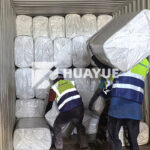

Can fiberglass insulation have asbestos?
Dec 5, 2025
Let's Work Together
Ready to take your business to the next level? Get in touch with our team of experts and let's discuss how we can help you achieve your goals.
Get Free Solutions
